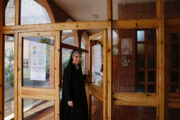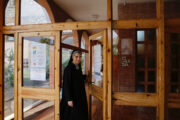The general public and medical professionals have long recognized the positive relationship between religiosity/spirituality and health. While researchers warn that no blanket conclusions should be made about this relationship (i.e., it differs depending on gender, denomination, diagnosis, and other factors), even many hard-nosed irreligious doctors agree that religion/spirituality helps patients “cope” and gives them “emotional support” and “positive state of mind.”
But when it comes to hard outcomes—clinical symptoms, biomarkers, and disease progression—most doctors say that religion/spirituality has little to do with medicine. Can religion make us feel better? Sure, the doctors say. Can religion actually make us better? “Of course not.” Most doctors, no doubt, would call any religious effect a placebo effect. In other words, you’re just fooling yourself.
But a growing body of research on placebos suggests that there’s no such thing as “just” a placebo. It appears that the traditional placebo—an inert medicine or procedure given under the pretext that it is or might be real—is but one part of the much larger, comprehensive meaningful context of healing and medical expertise. And when this context is brought together in just the right way, something strange happens for the patient and sometimes even for the practitioner.
A Surgeon’s Talisman
On the morning of August 6, 2011, my wife and I and our four-year-old son held each other as a neurosurgeon entered our pre-operating room with his assistant, who was carrying a clipboard and files. The surgeon was carrying nothing but an old wooden box. It was smaller than a cigar box, maybe six inches long, three or four inches wide, one or two inches tall. It was worn, and could’ve had ribbons and other decorations on it. Maybe inscriptions or small pictures. I couldn’t tell because I only caught a glimpse of it. I didn’t want to stare at it for obvious reasons, chief among them is that he was explaining to us the procedure that he was about to perform on our little boy’s head. And even though I was looking him directly in the eyes, and listening to the individual words coming out of his mouth, all I could think about was that box.
Did the box hold some special scalpels? Like samurai swords in the movies, were they passed down from master to student generation after generation? Aren’t they outdated and rusty by now? We learned later that it was a good luck charm of sorts. We never learned the meaning of the box itself but we later found out that inside the box were mementos from past patients. Whatever it “really” was for him, he clutched it tightly and it was the only thing he was holding. He finished his description and asked us if we had any questions. We didn’t.
We were told we couldn’t follow our son into the “real” pre-surgery room where he would be put to sleep. So he was rolled out of that waiting room and down a hall, all alone on that bed. He was sitting up and reaching out for us. But he didn’t cry or scream. We put on a smile and told him we’d see him just a few minutes after his nap. We turned to the surgeon and shook his hand. “We’ll see you in a little bit,” he said as he marched, good luck charm in hand, through big metal double doors, away to battle.
Evidence Based Medicine
While these charms may or may not be unusual in the world of modern surgical medicine, this instance highlights just how tightly bound are medicine and meaning. Separating the two has long been a goal of doctors and researchers (for what is a “blinded” study but the effort to control for the confounding effects of our inner worlds of meaning, fashioned by our cultural histories). It is noteworthy to this cultural-researcher-slash-cancer-parent that such a cultural artifact as a charm would be used by our surgeon and not our oncologist, neurologist, physical therapist and so on. Only the surgeon’s success and failure is so plain to see; he cannot hide behind layers of bureaucracy, conventional wisdom, or a patient’s lack of adherence to a protocol. In other words, the stakes are too high to not make use of the luck-bringing, confidence inducing efficacy of a charm.
From the standpoint of materialist, evidence-based medicine, this act of charm-carrying is troubling for it blurs the rigid binary we’ve agreed to uphold between the cold, hard materialism of scientific medical knowledge and practice on one side and the subjective, misleading, and utterly confounding world of culture, meaning and psychology on the other. The more committed we are to this view, the more we must see the charm as a personal idiosyncrasy, at best, or a breach of duty, at worst.
However, there is an emerging body of research that could upend this old binary and allow us to see our surgeon’s good luck charm to be as necessary as his scalpel. This field of research is coming to be known as placebo studies (not to be confused with placebo-controlled studies!) and it is showing, much to the chagrin of some defenders of the strict materialist narrative of medicine, that meaning and medicine, healing and hermeneutics, can never be fully separated.
The Power of Placebo
In studies like this, this, and this, researchers are finding that the placebo effect is best understood as a “meaning effect.” The placebo, Latin for “I shall please,” has been an acknowledged part of medicine since the late 18th century, and was seen in essence as a trick. But beginning in the 1990s, a few researchers such as Ted Kaptchuk, started to think about placebos as misunderstood medicine. They knew that placebos had real clinical effects: a new drug must outperform a placebo in order to show that it has independent clinical effects. For Kaptchuk, this meant that the medical community had been missing out on an important therapeutic agent. For if the placebo effect is always a part of medical interventions—in active and inert interventions alike—then we need to understand how to harness it for clinical benefit and not just control for it in drug studies. Â
Since the 1990s, Kaptchuk and others like Fabrizio Benedetti, Irving Kirsch, and Daniel Moerman have argued that a prerequisite for harnessing the placebo effect is to see it as a meaning effect. That is, placebos “work” when patients understand them as meaningful interventions. Pills, liquid medicine, injections, and surgeries are understood by most patients to have some power; regardless of their internal biochemical properties, most patients expect them to affect the human body in real and significant ways. And so they do.
For much of modern medical history the placebo effect was seen as a trick the human mind played on itself. A patient might “feel” better, but he could not physically “be” better. But studies like this started to show that the placebo intervention triggered observable biochemical reactions in the human body, and these biochemical reactions were often the same ones triggered by active medical interventions. The placebo effect, researchers found, is not just a mental illusion; it’s a set of observable biochemical changes in the human body induced by meaningful human interactions.
The implications of this are staggering. If meaningful human interactions can induce measurable and clinically significant changes in the human body then where do medical interventions begin and end? The findings of placebo studies over the past two decades suggest that the medical encounter between doctor and patient is overflowing with placebos and it is not only the patient who is experiencing a placebo effect.
There are also meaningful actions that doctors and other care-providers can take to increase their efficacy. In this study, the same medical intervention—tooth extraction—was given to patients but the difference between outcomes depended on the background assumptions and intentions of their dentists. When the dentists thought their patients might be given a powerful anesthesia, their patients reported less pain than when the dentists knew that their patients would not be given anesthesia but rather a placebo. In all cases, patients were given a placebo. The difference in their pain depended on the unspoken understanding of their dentists.
The Healing Power of Religion
What does this mean for the relation between religion and medicine? We know that the placebo-meaning effect only works when at least one member of the doctor/patient relationship believes that something effective is at work. And we know that this belief—often unconscious and always infused with hope and expectation—is dose-dependent and manipulable. Because religion/spirituality is a powerful source of meaning for so many patients and practitioners, perhaps it is time not just for a truce between religion and medicine but for a rapprochement. If cutting edge medical science can see religious meaning as producing measurable biochemical effects, then perhaps the holy and the healing can be brought back together. For medical practitioners this means that sensitivity to their patients’ religious/spiritual worlds is not just P.C. magnanimity. It just might be good medicine as well.Â
Justin Wilford is a guest contributor with the USC Center for Religion and Civic Culture.








